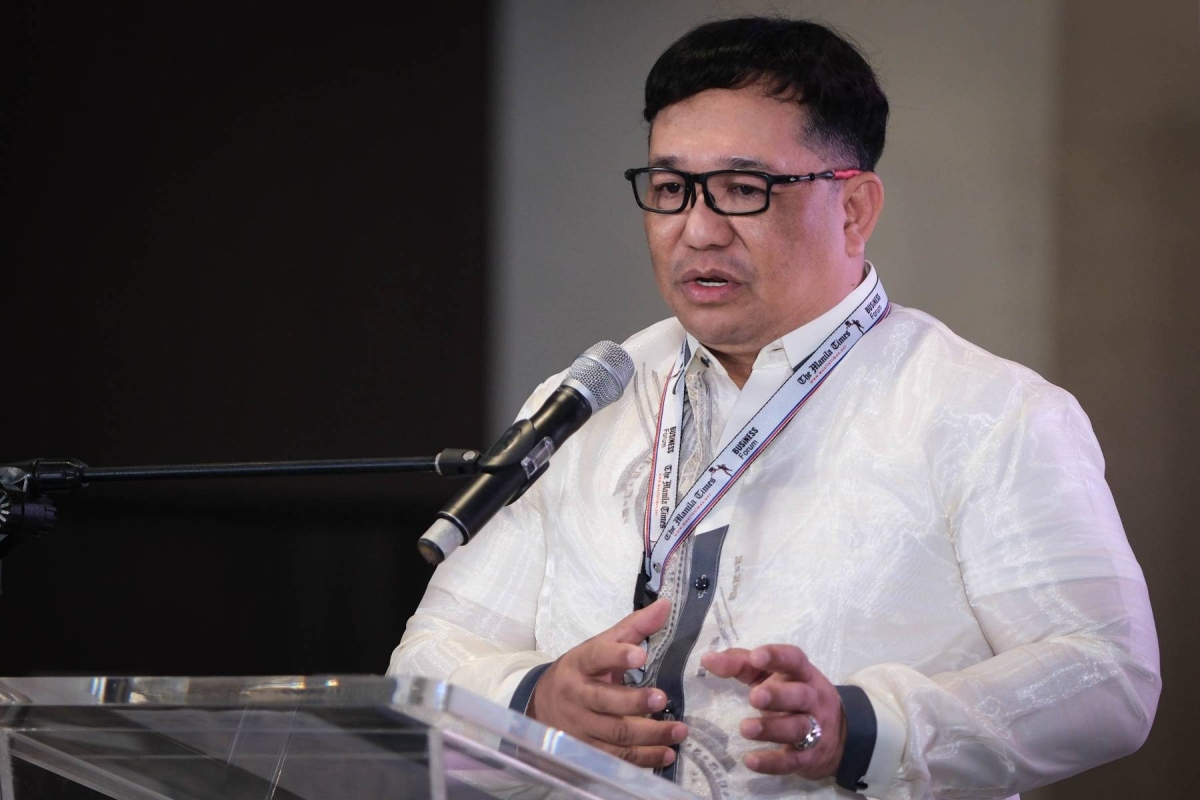The Philippines’ Vulnerability to Climate Change
The Philippines remains vulnerable to the threats of climate change, with its impact estimated to exceed P637 billion in the coming years, according to the Climate Change Commission (CCC). CCC Commissioner Albert de la Cruz emphasized during the Manila Times Forum that climate change is among the factors slowing the country’s economic growth. He stated, “We cannot progress because of the problems in our agricultural sector… and climate abnormalities. These are among the biggest reasons why we have issues with slow economic growth.”
Over the past 10 years, the economy has already recorded an estimated loss worth P637 billion due to climate change, and with the additional threats brought by El Niño, de la Cruz expects this figure to rise. He further noted, “The impact so far as the economy is concerned, it will get bigger, and we expect much bigger.”
Despite these challenges, de la Cruz highlighted that the Philippines has the capability to adapt towards sustainable goals due to its resilient people. However, he also acknowledged that the country faces various challenges, particularly in terms of technology and the necessary financial mechanisms.
One of the major challenges the Philippines faces in addressing climate change is the lack of access to advanced technology. While the country has made significant progress in renewable energy, there is still a need for more investment in research and development to further enhance the utilization of clean energy sources. Additionally, the Philippines needs to improve its infrastructure to withstand the impacts of climate change, such as strengthening coastal defenses to protect against rising sea levels and building more resilient housing to withstand extreme weather events.
Another challenge is the lack of sufficient financial mechanisms to support climate change adaptation and mitigation efforts. The CCC has been working to secure funding from international sources, but there is a need for increased domestic funding as well. This requires the government to allocate more resources towards climate change initiatives and to create innovative financing mechanisms, such as green bonds and climate funds, to attract private sector investment.
Furthermore, the Philippines needs to strengthen its policy framework and regulatory environment to effectively address climate change. This includes enacting legislation that promotes sustainable practices, such as the use of renewable energy and the reduction of greenhouse gas emissions. The government also needs to enhance its capacity to implement and enforce these policies, as well as to monitor and evaluate their effectiveness.
In conclusion, while the Philippines faces significant challenges in addressing climate change, there is also potential for the country to adapt and mitigate its effects. With investments in technology, financial mechanisms, and policy frameworks, the Philippines can build a more resilient and sustainable future. However, this requires a concerted effort from all stakeholders, including the government, private sector, and civil society, to work together towards common goals.
Fontanilla’s assertion that technology alone cannot drive change is crucial in understanding the role of technology in addressing climate change. While technological innovations have the potential to significantly reduce greenhouse gas emissions and mitigate the impacts of climate change, they must be accompanied by systemic approaches to ensure their effectiveness and sustainability.
One such systemic approach is the integration of public transport systems. By improving and expanding public transportation networks, countries can reduce the reliance on private vehicles, which are major contributors to greenhouse gas emissions. Additionally, investing in renewable energy sources and transitioning away from fossil fuels is another crucial aspect of a systemic approach to combating climate change.
However, Fontanilla argues that the focus should not solely be on decarbonization and honoring international agreements. Instead, she suggests that a broader perspective is needed, one that takes into account the unique context of each country. In the case of the Philippines, she highlights the importance of prioritizing resilience and adaptation due to the country’s vulnerability to climate change impacts.
This shift in perspective would require moving away from a greenhouse gas inventory-centric approach and instead focusing on reducing exposure and vulnerability to climate hazards. This means considering factors such as over-consumption, population growth, rapid urbanization, land liquidation, biodiversity loss, and poverty in everyday decision-making across all sectors.
For instance, in the energy sector, this would involve not only transitioning to renewable energy sources but also ensuring that energy systems are resilient and able to withstand the impacts of climate change. In the health sector, it would mean implementing measures to address the health risks associated with climate change, such as heatwaves and the spread of vector-borne diseases.
Furthermore, Fontanilla’s emphasis on nature-based solutions highlights the importance of preserving and restoring ecosystems as a means of climate change adaptation and mitigation. This includes initiatives such as reforestation, wetland restoration, and the protection of coastal areas, which can help reduce the impacts of extreme weather events and enhance the resilience of communities.
In conclusion, while technology plays a crucial role in addressing climate change, it must be accompanied by a systemic approach that takes into account the unique context of each country. This approach involves not only decarbonization and honoring international agreements but also prioritizing resilience and adaptation, reducing exposure and vulnerability to climate hazards, and integrating nature-based solutions. By adopting such a comprehensive approach, countries like the Philippines can better navigate the challenges posed by climate change and work towards a more sustainable and resilient future.
Sustainability Efforts in Different Sectors
Food Sector: Pacita Juan, the founder of Echostore, introduced the concept of “slow food” as a sustainability effort in the food sector. This movement aims to “fix the broken food system” by preserving culture and promoting the consumption of locally produced goods. In addition to promoting local consumption, Echostore also focuses on reducing food waste by implementing innovative strategies such as composting and partnering with local farmers to ensure that surplus produce is utilized effectively. By encouraging sustainable farming practices and supporting local communities, Echostore is contributing to a more resilient and environmentally friendly food sector.
Real Estate Sector: PH1 World Developers shared their sustainability efforts in the real estate sector. They ensure that all the houses they build are equipped with solar panels to generate power. Eric Gregor Tan, the PH1 General Manager for Horizontal Developments, acknowledged that sustainability can be expensive. However, they strive to cater to the affordable segment without disrupting the market by making sacrifices and implementing innovative financial models. In addition to solar panels, PH1 World Developers also incorporate energy-efficient design principles into their buildings, such as proper insulation and the use of sustainable materials. By prioritizing energy efficiency and renewable energy sources, PH1 World Developers are setting a new standard for sustainable real estate development.
Telecommunications Sector: Globe Telecom Inc., a telecommunications company, aligns its practices with global sustainability goals towards climate resilience and achieving net-zero emissions. Apple Evangelista, the Head of Sustainability and Social Responsibility, highlighted their commitment to green building compliance, with their headquarters in Bonifacio Global City running on renewable energy. They have also transitioned to the use of electric vehicles and aim to reduce emissions. Moreover, Globe Telecom Inc. has implemented various initiatives to promote digital sustainability, such as e-waste management programs and digital literacy campaigns to reduce paper consumption. By integrating sustainability into their operations, Globe Telecom Inc. is not only reducing their environmental impact but also inspiring other companies in the telecommunications sector to follow suit.
These sustainability efforts across different sectors demonstrate the Philippines’ commitment to addressing climate change and promoting a more sustainable future. By prioritizing resilience, adaptation, and systemic approaches, the country can mitigate the impacts of climate change and work towards a more sustainable and prosperous future. However, it is important to note that sustainability efforts should not be limited to just a few sectors. It is crucial for all industries to embrace sustainable practices and collaborate towards a common goal. By fostering a culture of sustainability and innovation, the Philippines can become a leader in sustainable development and serve as an inspiration for other nations around the world.







